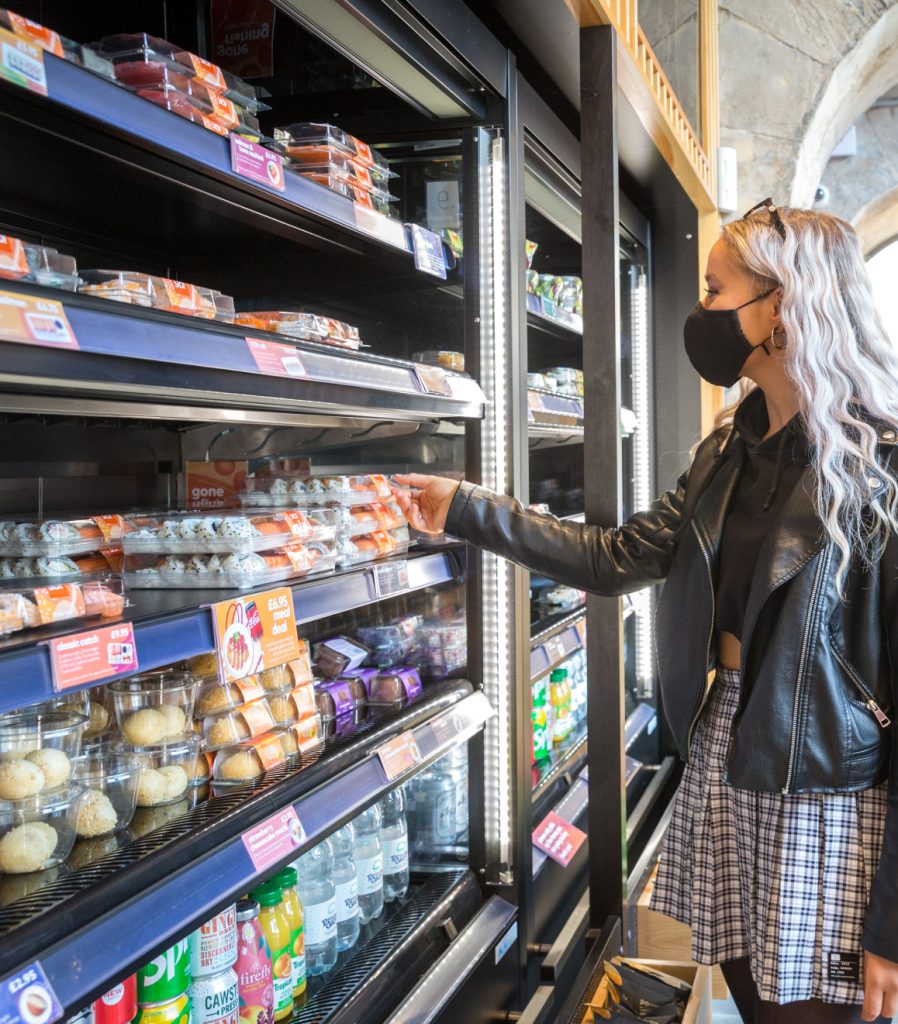
Energy efficiency you can feel
As the refrigeration industry and grocery retailers strive to meet targets for limiting carbon emissions and reducing running costs, there is an increasing focus on efficient refrigerated display equipment. Lucabo International’s CEO, Lewis Bourne (LB), and Adande Aircell’s Engineering and Research Director, Ian Wood (IW), share their views on the relative merits of energy saving technologies currently available and explain the benefits of Aircell technology.
What is the main factor influencing the energy efficiency of refrigerated display cabinets?
LB: The fundamental flaw in the design of traditional open-front refrigerated display cabinets is the base to canopy air curtain which is not sufficiently robust to prevent chilled air from spilling from the cabinet. The spillage creates cold aisle syndrome which is the chilly and uncomfortable temperature experienced by shoppers in the refrigerated departments of stores. The spillage of chilled air causes the equipment’s refrigeration machinery to work harder to maintain holding temperature, thus increasing energy consumption and adding to electricity costs. Chilled air spillage also causes fluctuations in the temperature within the display cabinet with detrimental implications for the quality and longevity of perishable merchandise.
IW: To assess the scale of cold aisle syndrome, our representatives visited the stores of six major UK retailers. At each store, temperature, relative humidity and dew point were recorded in a non-refrigerated area to establish ambient conditions. Readings were then taken in refrigerated sections of the stores, including dairy, convenience food, produce and pre-packed fresh meat aisles. Data was recorded at a consistent 600 mm distance from the refrigerated cabinets using a USB data logger. Cold aisle syndrome existed in the refrigerated departments at every store and on average, temperatures were 25% – and 30% colder than the store ambient temperatures. Temperatures were consistently coldest in pre-packed fresh meat aisles, with the most significant temperature discrepancy measured at 11.5oC, some 6.5oC lower than the store’s ambient temperature.

Why has there not been a wider adoption of doors on cabinets to limit cold air spillage?
LB: Retailers are aware that shoppers prefer free and open access to merchandise for shopping and browsing. In-store research conducted by Shopping Behaviour Xplained Ltd (SBXL) concluded that cabinets with doors had a 13% reduction in grab-and-go purchases compared with open-front displays. The report also noted that on average 31% of shoppers for chilled goods from open front displays paused to read pack labels in detail, but this figure dropped to 9% for cabinets with doors, suggesting that the latter are a barrier to browsing. We have anecdotal evidence that cabinets with doors are high maintenance in terms of cleaning, repair, and the costly replacement of damaged doors.
IW: Whilst cabinets with doors may work in stores with low-volume sales, they are not the answer for high-volume food retailing environments with frequent door openings. To put this to the test we conducted laboratory trials under industry standard conditions. Over seven days temperatures within a cabinet with doors were measured, during 12-hour periods at 30-second intervals, for various opening frequencies with an opening/closing cycle of 15 seconds. Having established baseline data for door openings of 10 per hour, tests were conducted at 30 openings per hour. The average test pack temperature rose by 5°C for 30 openings per hour. The cabinet failed to recover to the operating temperature of -1 to +4°C, even after twelve hours with the doors closed. The higher temperature in the cabinet increased the duty on the refrigeration plant with a surge in energy consumption. This increased temperature could easily impact the freshness of perishable merchandise causing potential food waste for retailers.
What other energy saving technologies are available?
LB: The industry has seen various initiatives over the years, including shelf edge technology which has been adopted by some retailers as a retrofit solution. However, only modest percentage energy savings in the low teens have been achieved, which have been outweighed by hikes in electricity prices. Shelf edge technology does little to address the issues of temperature bandwidth which is a critical factor in maintaining perishable merchandise at optimum quality and freshness.
What is different about Aircell?
IW: Aircell segments the cabinet into a series of air flow managed cells with shorter air curtains. The smaller cells have a shorter air column and independent management of air movement, resulting in less pressure on the air curtain of each cell. This significantly reduces cold air spillage and eliminates cold aisle syndrome. There is less duty on the refrigeration machinery to maintain holding temperature and energy consumption is reduced. The system does not require back panel flow to support the air curtain, so it does not over cool food at the rear of the cabinet, which is common in cabinets with and without doors. The result is our Bora model which is designed specifically for the grab-and-go market whilst Lucabo’s Aero cabinets are suitable for supermarket and convenience stores.

What data do you have to support the credentials of these cabinets?
IW: Stringent testing has been fundamental to the development of both models. Integral 1250 mm Aero and Bora models with glass end walls and an operating temperature range of 3M1 (-1°C to +5 C at climate class 3, 25° C/60% RH) both achieve ‘B’ ratings under the commercial energy labelling regulations. Most comparably sized conventional open-front multi-deck cabinets have an energy label rating of ‘E’ or ‘F’. The energy consumption figure of 2,716 kWh/annum for the Bora and Aero models represents a saving over 68% when compared with the energy usage figure of 8,702 kWh/annum for an ‘F’ rated cabinet. The comparison also highlighted that the Aircell cabinets had a temperature bandwidth of 2° C to 5° C against -1° C to 7° C stated on the ‘F’ rated cabinet label. Accurate and stable holding temperatures help hold food at optimum quality and freshness, extending shelf life and reducing the amount of merchandise which maybe price discounted or thrown away due to deterioration in freshness or appearance.
